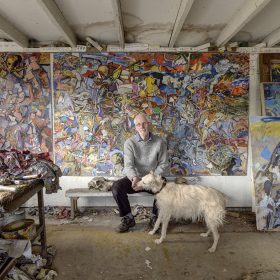Sir Robin Philipson had a significant, influential presence on the Scottish Art Scene throughout his lifetime. He served as Head of School of Drawing and Painting at Edinburgh College of Art where he diligently maintained the ideals of the post-war Edinburgh School. And, for a whole decade he was President of the Royal Scottish Academy – a period seen as a Golden Age in Scottish Painting. First and foremost, however, he was a practicing painter.
In 1961 Tom Elder Dickinson described Robin Philipson as ‘…original without being pretentious, forceful without being crass, advanced without being outré. . . At his best he is a supreme painter possessed by a mood of peculiar sensitiveness. I can think of no artist today whose understanding and feeling for the qualities of paint are so perfectly matched to his lyrical purpose; he takes the paint into his very imagination and makes it speak with (an) eloquence and fervour.’
Philipson was enormously important to The Scottish Gallery where we held nine exhibitions in his lifetime. He was doubtless the most high-profile Scottish artist of his generation earning countless honours including a knighthood in 1976.
The Scottish Gallery exhibitions: 1954, 1958, 1961 (Festival), 1965 (Festival), 1968, 1970 (Festival), 1973, 1976 (Festival), 1983 (Festival) 1995 (Memorial), 2003, 2006, 2012, 2016 (Centenary)
His art, its free handling, its meaningful decorative values and its sometimes dark subjects, it remains a serious investigation of life. For him the production of art was essential but brave.
Elizabeth Cumming, 2018












